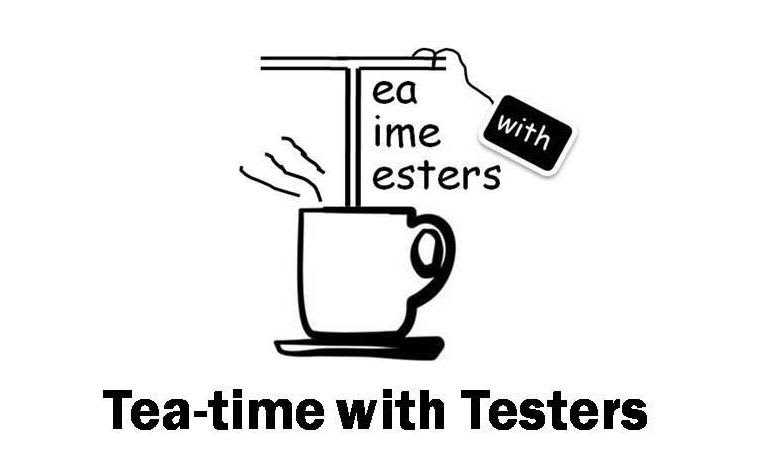Are you just a Tester or a writer, painter & musician too?
Harsha Bhogle in his book “Out of the Box – Watching the Game We Love” has a mention of Peter Roebuck who told the twin loves of his life: cricket and the English language. They work well together; certainly in our game which lends itself to fine writing. The above lines have a unique reflection about people having multiple passions and interests. People’s ‟ talents are usually not limited to being good at just one thing for life (we usually refer to as Passion) and are helped immensely by parallel interests. In the case of Peter Roebuck, it‟s Cricket and English language.
Jack Russell came into the limelight when was a part of the English cricket team in the 1980s and 1990s. Though not being formally trained at art, he had a special interest in art and took up as a full-time artist after his Cricket career was over. Not only this, but he also is a Football goalkeeping coach.
In Michael Phelps’s biography (Michael Phelps-The Untold Story of a Champion) by Bob Schaller, there is a mention of fellow swimmer Natalie Coughlin. He says “A graduate of Cal-Berkeley, Natalie Coughlin has interests outside of the pool that means as much to her as her life in water. She goes out of her way to keep balance in her life, and while swimmers everywhere do doubles and train hours every single day, Coughlin is just as prone to balance a single daily workout with Pilates, walking her dog, or Spinning.”
“Looking at the Blogosphere, there are so many distinguished testing practitioners who not only are the experts at their craft but also find time to do write frequently in blogs, magazines, speak in conferences and other relevant forums ”
There exist people who seemingly achieve more in a day thereby giving an impression to the external world that God probably was more kind to these people and gave them more than 24 hours in a day. It is often intriguing to me to wonder why some people manage different passions so well while some people attempt the same but with little success.
My mind had been working overtime to demystify this fact and following in this article. I would like to share some thoughts about it. The text that follows is mostly in the form of answers to some relevant questions involving the handling of multiple passions.
Am I “Only Interested” or Am I “Fully Committed”?
Ken Blanchard in his book “The Heart of a Leader” mentions-I learned from author and consultant Art Turock that we need to make a distinction between being interested and being committed. When you are “interested” in doing something, you only do it when it‟s convenient, but when you are “committed”, you follow through no matter what, no excuse.”
I think this is a very relevant observation. People who manage multiple passions are not only interested and deeply in love with their areas of interests but are also hugely committed towards the same. They operate in a mode as if it‟s their responsibility to contribute towards their passion every day, every hour. Many people get inspired and interested in pursuing additional interests but fail to pursue them for a longer period of time because the convenience factor creeps in with the lack of commitment. If one is committed to the cause, it‟s not impossible to cross any obstacle. If you like to do something but have not been able to pursue, just ask- Do I really want it badly? Am I really only interested or committed also? The sooner one sorts out the answers to these questions, it lends the desired clarity to live with one’s passions.
Am I able to “prioritize” effectively?
I was having a conversation with J.D.Meier about managing multiple priorities and why individuals even while having interests in multiple activities aren’t able to contribute enough or balance properly.
He said here’s what I do: Mapping out what‟s Important: Identify the most important results in each area or hot spot in your life (just the top 3 results for each hot spot or interest)
Producing Results:
- On Mondays, I identify 3 results for the week
- Each day, I identify 3 results I want to accomplish (this drives my day)
- On Fridays, I reflect on my results. I identify 3 things going well, and 3 things to improve.
- Each month, I pick a focus theme. This is how I can balance my interests. It allows me to focus less on one thing, while I focus more on another.
The question may arise, whether an individual should talk about more than 3 priorities at a given time? J.D. Meier answered it: Why not finish the first 3, and then bite off more? The value of 3 is that you can remember it without writing it down. Test yourself. Today, I had 3 priorities – complete my draft vision, confirm the budget, and sync w/my the partner group. Did I have lots more things to do? … Sure, but those 3 were my best bets for the day. If I got through those 3, I could always bite off more. What I didn’t want to do was have a long list of things I couldn’t remember.
The rule of 3 was actually found to be the most effective number in the military for people to remember outcomes without writing things down. I didn’t know this at the time. I’m just happy that the military came to the same conclusion. I lucked into it 🙂 Isn’t this Simplification at its best? The clear mind does achieve more than a cluttered mind.
Am I able to “create” enough time?
Of course, the common thought people who want to do more but aren’t‟able to do so is that they don‟t have enough time. From my observations, the idea is to create time for self, for what you want to do. There are infinite ways one can look at the day and build up time for something you really want to do. One of the ways, Subroto Bagchi mentions in his book “The Professional” when he introduces the term- “White Space”- I do not know how the term White Space originated. In telecommunication, it denotes frequency allocated to a channel but not used. Typically, broadcasters are provided additional frequency that is not meant to be populated so that the adjacent broadcast stations do not overlap. In print, the white space denotes emptiness so that we can read between the characters that form a word and a group of words that form a sentence. In our professional lives, white space is a train or a bus ride to work; it is the time waiting outside the client’s office, the time spent on long flights. We have all been given huge white spaces and we simply let their power go waste.
Look back at the day you spent, you will notice the white spaces and how you utilized them. If you wanted to read a book, could you have utilized the white space better? If you wanted to write something, could white space have been utilized in a better manner? I am not suggesting you use all the available White spaces towards your interests, probably they are not ideal. But what is more apt is that to create time for self, White space offers the necessary time-space for you. By just having a look at how you utilize the time in the day, you would be able to figure out how to manufacture time. Believe me, it‟s possible!
Am I able to “compartmentalize” life?
“Our main business is not to see what lies dimly at a distance, but to do what lies clearly at hands” – Thomas Carlyle Dale Carnegie too was a huge proponent of Living in a Day tight compartments. Over a period of time, I have begun to appreciate the essence of living in Day tight compartments. Much of our mental and emotional energies drain out worrying about what will happen tomorrow or also by replaying the mistakes that we did yesterday in our minds. Living in a day-tight compartment is a metaphor that symbolizes that we shut out thoughts that carry over from yesterday or thoughts that represents tomorrow’s anxieties and live life as it happens today. The idea is not to let residue thoughts of yesterday and toxic worries of tomorrow bother you today.
I have found the application of this concept suitable even while managing multiple passions. I try and live a slightly modified version of this principle- “Live in an hour tight compartments” when you are dealing with multiple interests. It‟s usual that disappointment resulting in failure or a mistake in one task during the start of the day often occupies your mind throughout the day and affects everything else you do throughout the day. Living the day in an hour tight compartment helps one shut out what happened in the earlier on and helps maintain the required focus in other interests.

Anuj Magazine
Anuj currently works at Walmart Global Tech India and leads Strategic Technology Programs. Prior to this has handled leadership roles in Product Management, Engineering, and Technical Operations. An innovator at heart, he has 16 patent filings and supports a few start-ups in advisory roles. Follow him on Twitter @anujmagazine.

